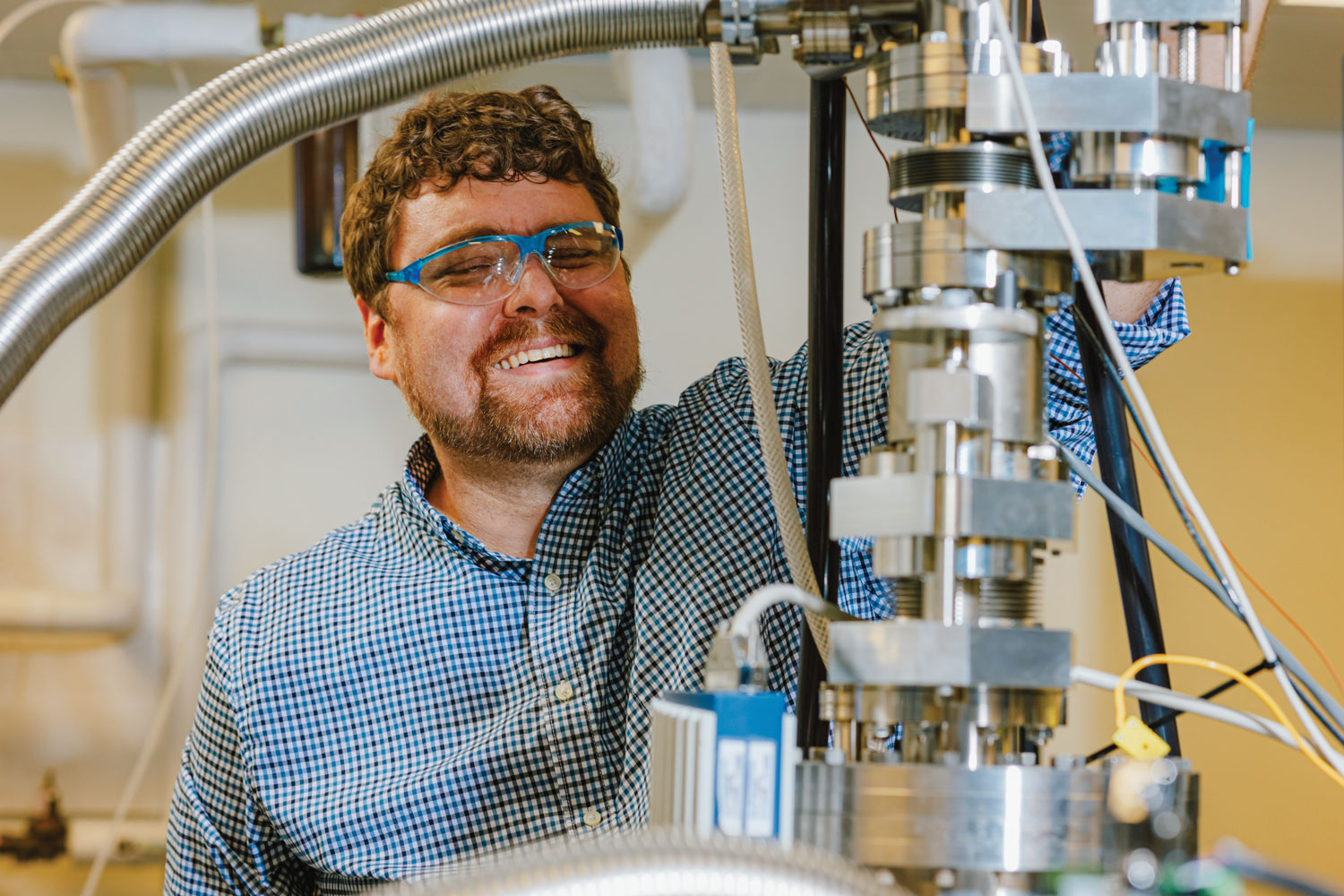
Gilbert Honored By NSSA
MSE Assistant Professor Dustin Gilbert has received the Nuetron Scattering Society of American’s Science Prize, which recognizes major scientific accomplishments or important scientific contributions within the last five years using neutron scattering techniques. Gilbert, whose work was sponsored by the Department of Energy, received the Science Prize for his research on characterizing the skyrmions, topologically stable spin vortices, in thin films using neutron scattering toward the goal of realizing the potential of utilizing skyrmions for spintronics applications. He is one of the leading researchers probing advanced materials with a particular emphasis on advanced neutron and synchrotron scattering techniques.
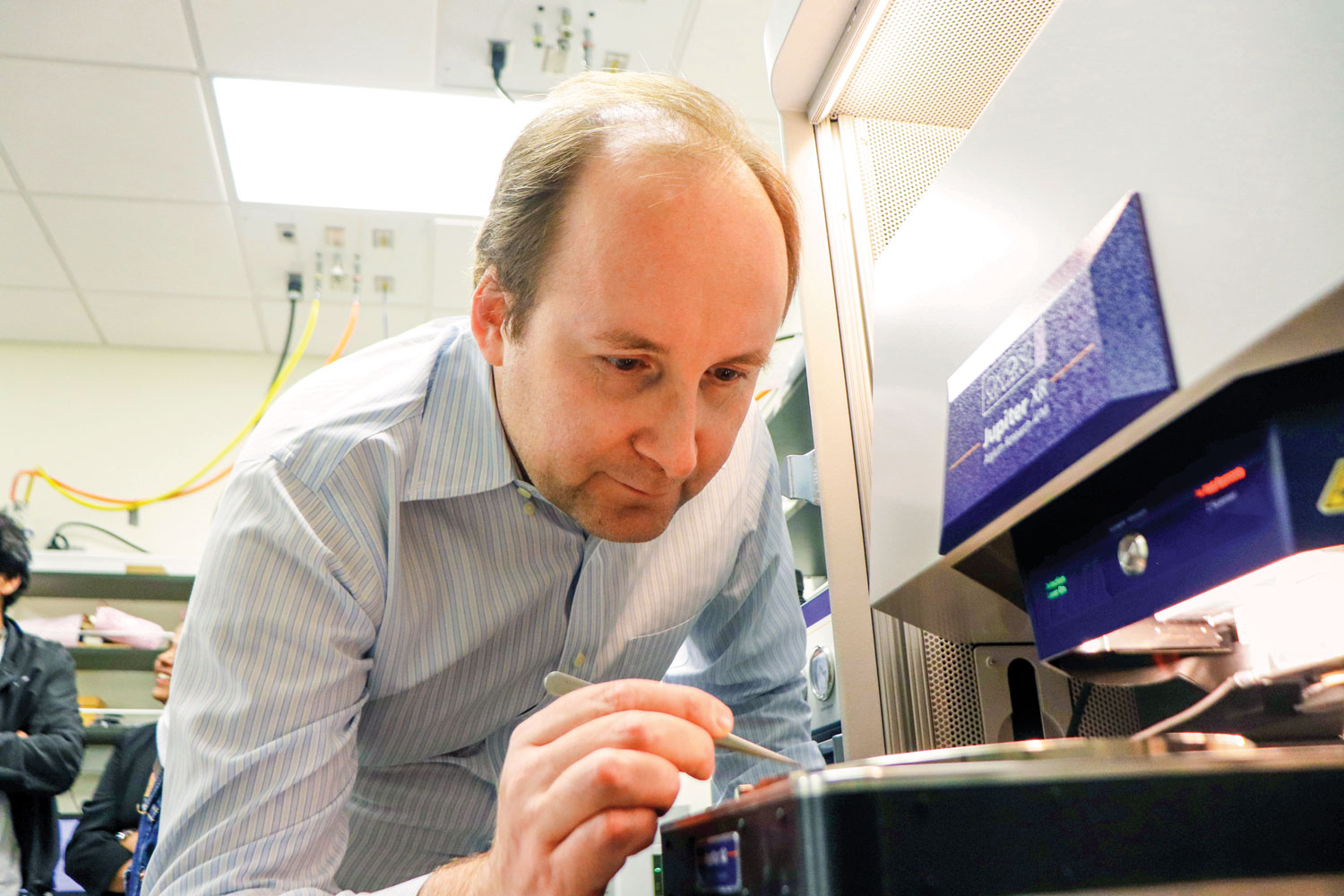
AI at the Helm
Identifying, characterizing, and fixing microstructural defects is vital to ensuring that novel materials can be applied outside the lab, but manually finding the nanometer-sized defects is a major bottleneck in the material development cycle. This February, MSE Weston Fulton Professor Sergei Kalinin and his team integrated an atomic force microscope with UT’s supercomputer, ISAAC, and a machine learning algorithm to create an agent that can autonomously identify and characterize areas of interest on a material sample. The team has employed the agent on workflows ranging from simple feature discovery to deep kernel learning, gathering useful data up to 100 times faster than a human operator.
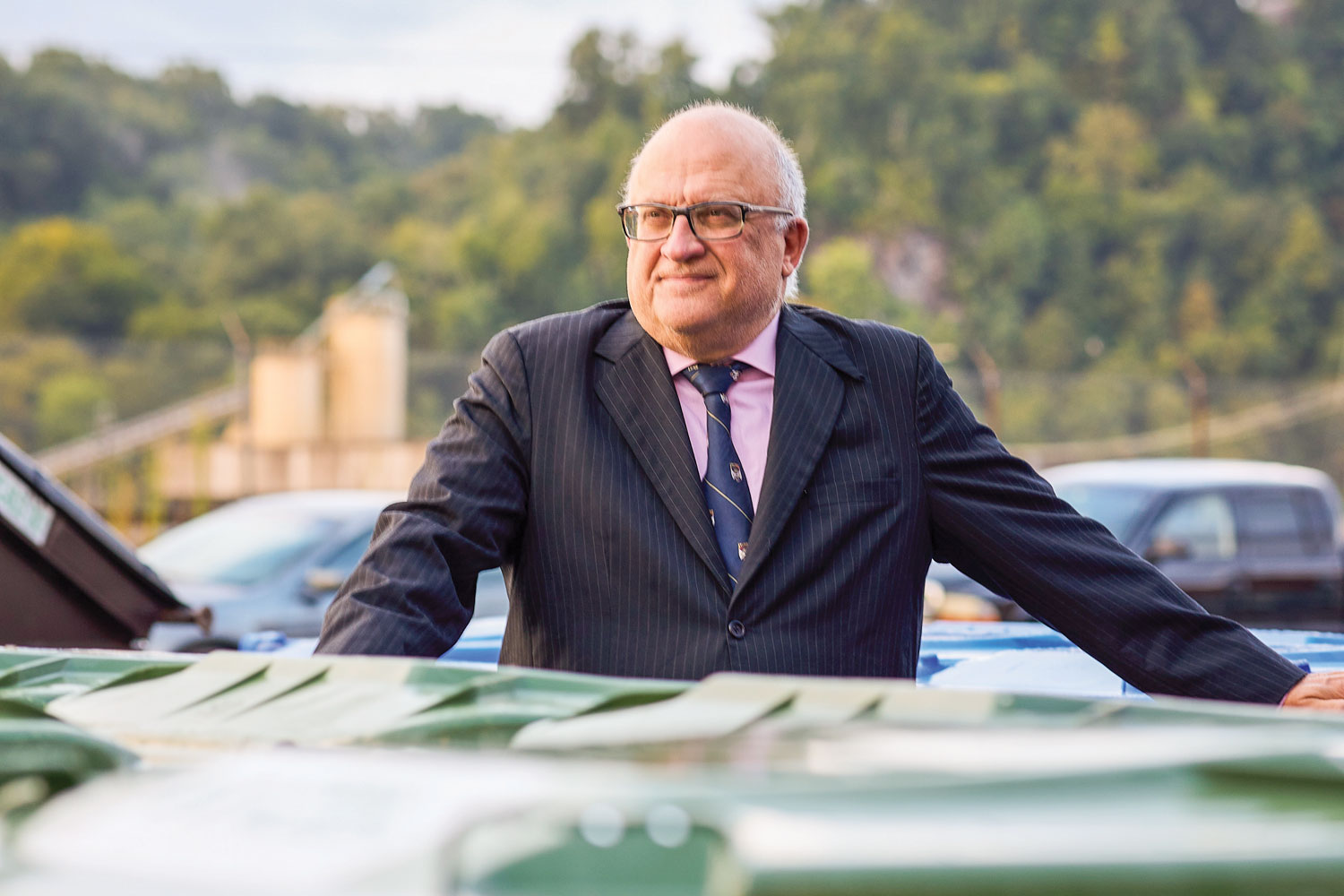
Burnt Out on Bunker Fuel
The marine shipping industry runs on bunker fuel, a low-performance fuel that releases airborne pollutants on combustion. The low cost and unusual texture of bunker fuel has made the industry resistant to clean energy alternatives. Fortunately, UT-ORNL Governor’s Chair for Biorefining Art Ragauskas and his colleagues have found a way to seamlessly blend bunker fuel with a biofuel made from lignin, a molecule that has long been viewed as a waste product of the lumber industry. In a $2.5 million project led by Charles Cai of the University of California, Riverside, Ragauskas will be testing blends of bunker fuel and the new biofuel to ensure that the mixtures adhere to industry standards. So far, the blends have been shown to reduce greenhouse gas emissions and air pollution without sacrificing performance—or raising the price of fuel.
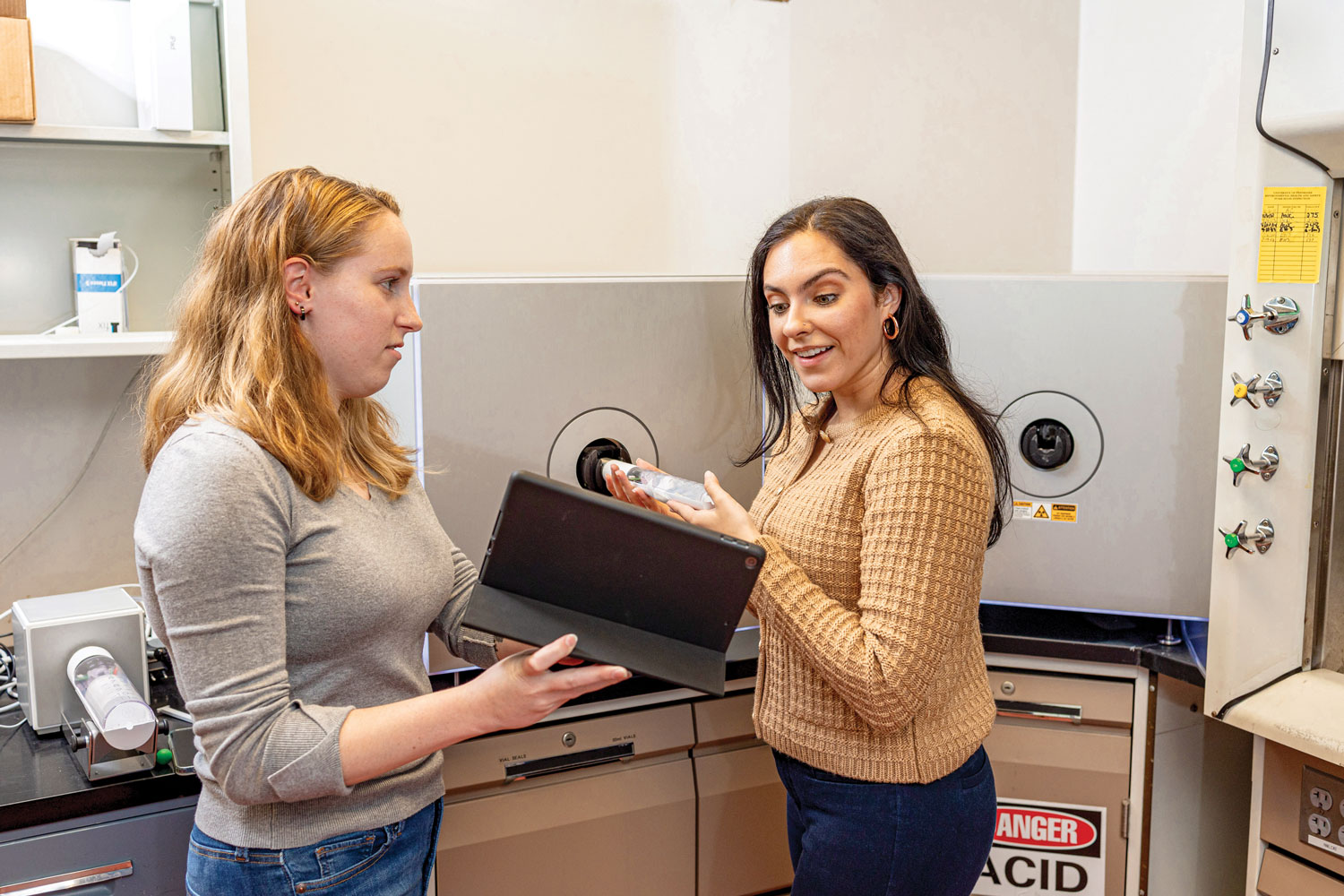
Unique Advantage
NE Assistant Professor Ivis Chaple Gore has partnered with the College of Veterinary Medicine and the UT-Oak Ridge Innovation Institute to purchase $900,000 of new PET and CT imaging equipment. The new equipment, which will be used on small animals like mice and rats, was installed in the Theranostics Development Lab at UT Medical Center in December. It expands the preclinical imaging and translational capabilities of the lab space and supports radioisotope research for health and biological applications. Chaple Gore took the lead in creating a coalition of UT support to help make the purchase a reality. Her research group designs, synthesizes, and characterizes radio pharmaceuticals. Since no other location in East Tennessee has both a small-animal PET and CT scanner, the new additions benefit not only UT but also the surrounding community.
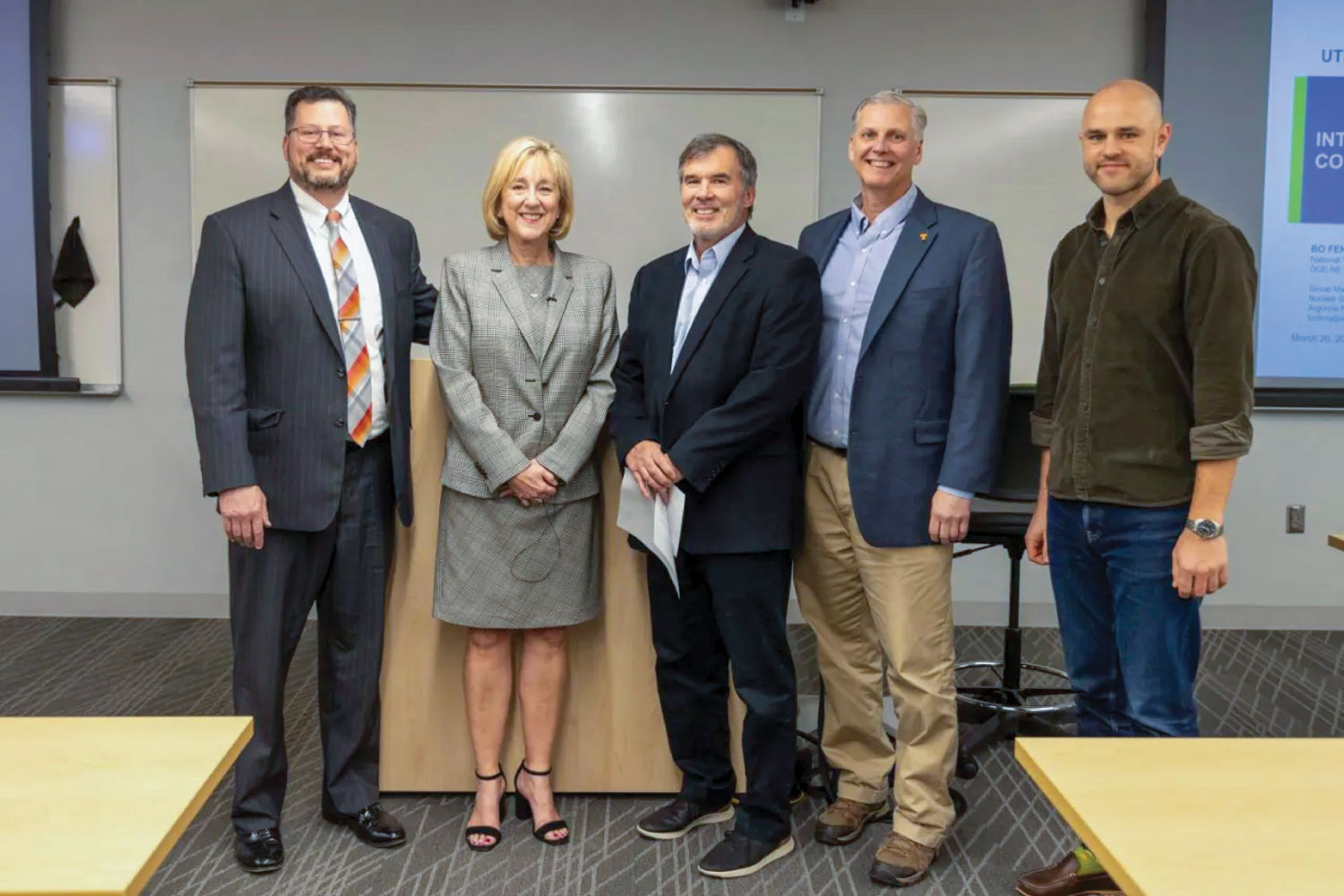
Hines Named 2024 Macebearer
Postelle Professor, Chancellor’s Professor, and outgoing head of the Department of Nuclear Engineering Wes Hines was named the university’s 2024 Macebearer. Designation as Macebearer is the highest faculty honor and recognized a distinguished career and commitment of service to students, scholarship, and society. Hines joined UT in 1995 and served in a variety of positions within the department. Over the past 20 years, Hines has led 131 research projects with awards totaling over $17 million, sponsored by both government and commercial entities in the U.S. and abroad. He has written more than 350 technical publications and has been invited to speak around the world.

UT Team Uses AI to Improve Sepsis Detection, Treatment
Sepsis acquired in clinical settings threatens the lives of tens of millions of people worldwide every year. The condition, in which the body responds to an infection by essentially going into overdrive, inadvertently attacks the body by overzealously releasing chemicals to defend it. A multidisciplinary team of UT researchers, including EECS Associate Professor Scott Emrich and ISE Associate Professor Anahita Khojandi, is leveraging data in electronic health records, including physiological and imaging data, to develop models that help with treatment planning. The project demonstrates the potential power of AI in medical applications.